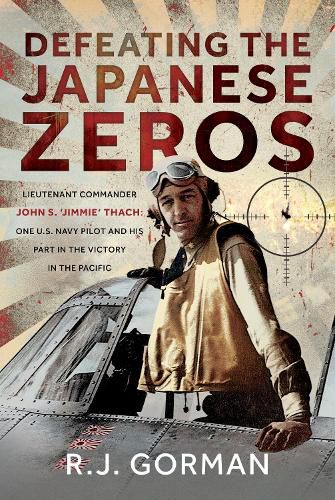Readings Newsletter
Become a Readings Member to make your shopping experience even easier.
Sign in or sign up for free!
You’re not far away from qualifying for FREE standard shipping within Australia
You’ve qualified for FREE standard shipping within Australia
The cart is loading…






In the months before the attack on Pearl Harbor, a report from Nationalist China described a mysterious "super fighter plane" used by Japanese forces, said to be faster and more maneuverable than anything in America's arsenal. U.S. intelligence dismissed it as exaggeration, underestimating Japan's capabilities. The plane was later identified as the Mitsubishi A6M "Zero," which dominated the Pacific skies after Pearl Harbor. Lieutenant Commander John S. "Jimmie" Thach of the U.S. Navy recognized the threat posed by the Zero and devised a tactic to counter it. With the Japanese preparing to attack Midway Atoll, Thach trained his pilots in the "Thach Weave," a revolutionary formation designed to offset the Zero's superior performance. This tactic proved highly effective in air combat and allowed Thach's squadron to neutralize the Japanese advantage. The battle at Midway became a turning point in the Pacific War. The U.S. Navy's victory, aided by Thach's tactical innovation, crippled Japan's offensive capabilities. After Midway, the Japanese would never win another major battle, while the Americans would never lose one, marking a decisive shift in the war's outcome. AUTHOR: R. J. 'Bob' Gorman is a retired Arizona state prosecutor who, when he was a teenager, took flying lessons from a United States Navy fighter pilot who flew at the epic Battle of Midway. Since then he has done a great deal of research on the air war in the Pacific, and especially the decisive Battle of Midway. This is his first book on the subject. 32 b/w illustrations
$9.00 standard shipping within Australia
FREE standard shipping within Australia for orders over $100.00
Express & International shipping calculated at checkout
In the months before the attack on Pearl Harbor, a report from Nationalist China described a mysterious "super fighter plane" used by Japanese forces, said to be faster and more maneuverable than anything in America's arsenal. U.S. intelligence dismissed it as exaggeration, underestimating Japan's capabilities. The plane was later identified as the Mitsubishi A6M "Zero," which dominated the Pacific skies after Pearl Harbor. Lieutenant Commander John S. "Jimmie" Thach of the U.S. Navy recognized the threat posed by the Zero and devised a tactic to counter it. With the Japanese preparing to attack Midway Atoll, Thach trained his pilots in the "Thach Weave," a revolutionary formation designed to offset the Zero's superior performance. This tactic proved highly effective in air combat and allowed Thach's squadron to neutralize the Japanese advantage. The battle at Midway became a turning point in the Pacific War. The U.S. Navy's victory, aided by Thach's tactical innovation, crippled Japan's offensive capabilities. After Midway, the Japanese would never win another major battle, while the Americans would never lose one, marking a decisive shift in the war's outcome. AUTHOR: R. J. 'Bob' Gorman is a retired Arizona state prosecutor who, when he was a teenager, took flying lessons from a United States Navy fighter pilot who flew at the epic Battle of Midway. Since then he has done a great deal of research on the air war in the Pacific, and especially the decisive Battle of Midway. This is his first book on the subject. 32 b/w illustrations